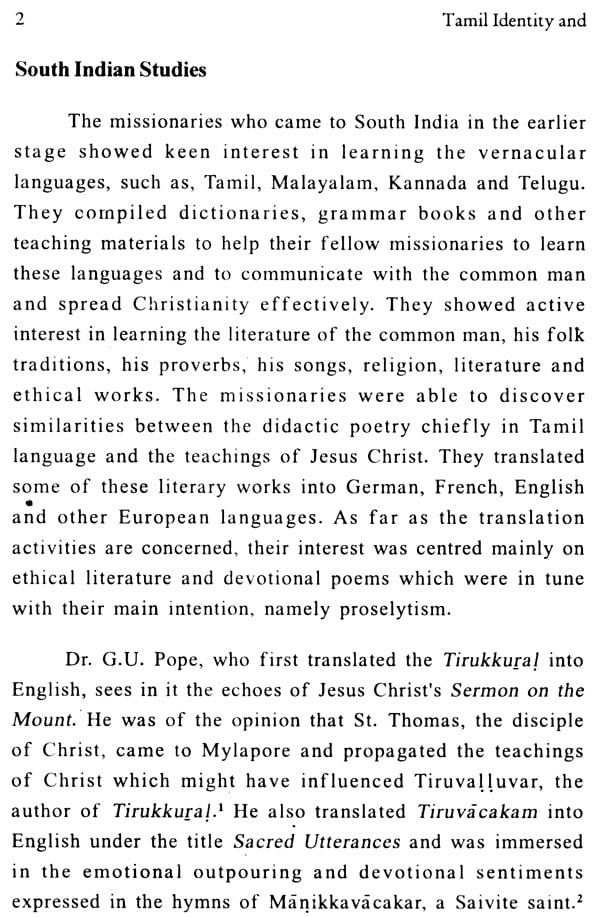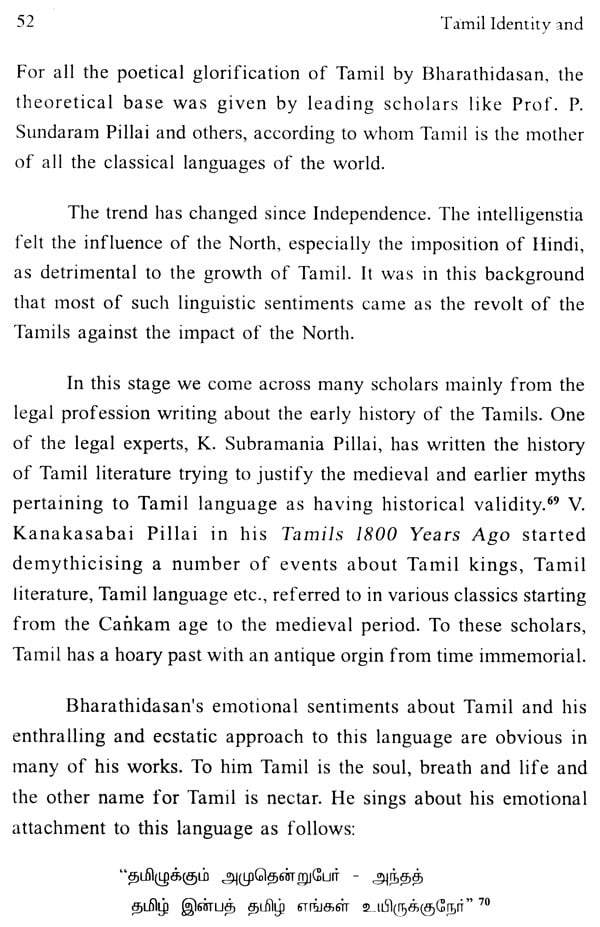
Tamil Indentity and Resistance to Sanskrit
Book Specification
| Item Code: | NAY751 |
| Author: | G. John Samuel |
| Publisher: | Institute of Asian Studies, Chennai |
| Language: | English |
| Edition: | 1998 |
| Pages: | 80 |
| Cover: | PAPERBACK |
| Other Details | 8.50 X 5.50 inch |
| Weight | 120 gm |
Book Description
With the evolution of the three dynasties, namely the Cora, the Cola and the Pantiyas from the tribal chieftains engaged in internecine wars, the idea of Tamil nationalism gradually came into existence. The epic Cilappatikaram is the first work which gives eloquent expression to Tamil nationalism. Pride in Tamil national heritage and Tamil cultural ascendancy encouraged Tamils to resist the impact of North Indian culture which had spread mainly through Sanskrit. Tamils from the very beginning considered their language, literature and culture as distinct from those of their northern counterpart. Persistent efforts have long been taken by Tamils to preserve their cultural and linguistic identity.
An attempt has been made here to trace historically the Tamil identity and resistance to Sanskrit. This monograph has been written on the request of my friend Dr. T. Wignesan of France who has invited me to present a paper at the International Conference of Asian Scholars to be held in Netherlands in June 1998.
I am very much indebted to my wife Mrs. Indra Samuel, the companion of my life, for encouraging and supporting my academic pursuits.
Many people have helped me in the preparation of this monograph. Mr. Patrick Harridan of the Multi-media Department of the Institute of Asian Studies has gone through the manuscripts and edited the language. Dr. P. Thiyagarajan, Dr. M.S. Nagarajan, Dr. V. Murugan, Mr. M. Mathialagan, Mr. C. Subramanian and Dr. K. Jaya Kumar have 'helped me to enrich this monograph by their valuable suggestions.
The entire monograph was written at different intervals within a period of one month in the midst of my heavy administrative burden. Whenever I found time, the material was dictated to my secretary Mrs. G. Ambigai from memory. I extend my thanks to Mrs. G. Ambigai for having taken dictation from me and composed the entire material. My thanks are also due to Mr. R. Ruskin Lavy who incorporated all the corrections made.
Dr. J<... jayakumar prepared the index mr. a.s. natarajan has designed cover. i extend my heartfelt thanks to these two persons for their kind co-operation. student xerox offset printers deserve appreciation neat execution of printing.>
These changes resulted in the emergence of an industrialized society with English-educated middle class and a working class, namely the proletarians. The traditional type of native education was replaced by Western education, which was designed with the objective of producing Indian employees who would be loyal to the British Government and work for cheaper wages.
The age-old feudal system and its social as well as family structures were shattered and the joint family structure of the past gave place to single family pattern comprising the bread-winning man and his wife, whose main responsibility was and remains to bear and rear children.
Book's Contents and Sample Pages









